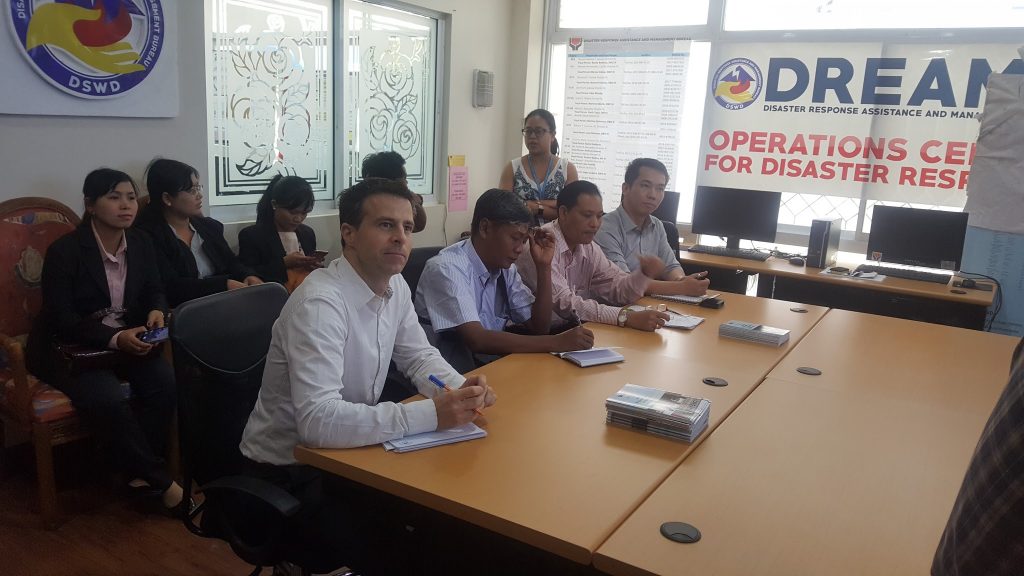
28 March 2017 – The Disaster Response Operations Monitoring and Information Center (DROMIC) presented the country’s emergency preparedness and response framework as part of a study visit by the Myanmar Relief and Resettlement Department (RRD).
During the presentation, the Department was introduced as being the executive Department of the Philippine Government responsible for the protection of social welfare rights and the promotion of social development of Filipinos. The presentation continued on to introduce the different programs by the Department.
Shortly thereafter, the RA 10121 or the Philippine DRRM Act of 2010 was discussed wherein the Department is entrusted to be the Vice-Chair for Disaster Response of the National Disaster Risk Reduction and Management Council (NDRRMC). Given this, the Department is mandated to provide life preservation and meet the basic subsistence needs of affected population based on acceptable standards during or immediately after a disaster.
The country was then introduced as ranking third (1994-2013) in terms of being the most disaster-affected countries in the world with hydro-meteorological hazards such as floods and storms topping the list of the most common hazards that affect Filipinos. Also noteworthy is the fact that the top 10 disasters that have hit the country occurred in the last two decades.
Hence in this “new normal” that the country is faced with where weather patterns have changed and natural events are increasingly menacing, the Predictive Analytics for Humanitarian Response (PAHR) was showcased. PAHR is the crystal ball, so to speak, of the Department in order to prepare for the appropriate level of response whenever there are potential disaster events. It is all about making predictions using mathematical theories, scientific processes, and spatial technologies based on current and historical data. In a nutshell, Disaster Imagination is what it is and asks questions “What could possibly happen?” “Where could it possible happen?” and “How many will be affected should it happen?”
Results of the PAHR for Lawin (I.N. Haima) was also presented where it was stressed that the figures from the results were not far off compared to the actual figures from when it already made landfall and ravaged much of Northern Luzon. This was followed by the presentation of the PAHR for the “the big one” or the 7.2-magnitude earthquake that could hit Metro Manila and nearby provinces.
As a next step for PAHR, its version 3.0 will be a tool with artificial intelligence which will self-analyze all results that will be put into it. This means that as more disasters happen, the more it can profile an area and, in effect, the more realistic it can predict what could happen to that area at any given potential disaster event scenario.
